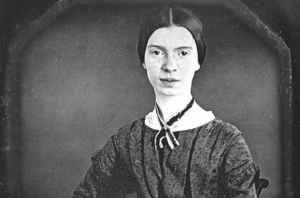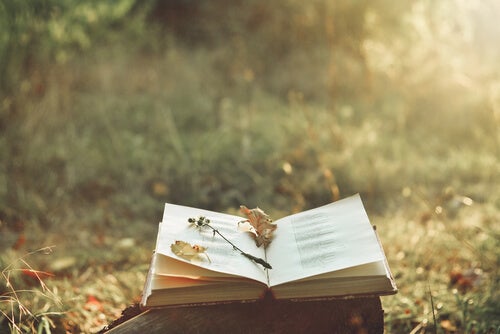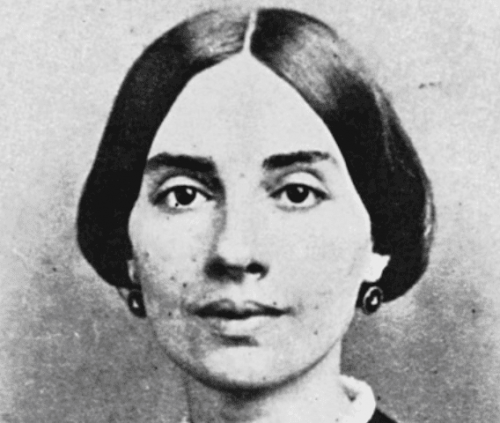Biography of an Enigmatic Woman: Emily Dickinson

Emily Dickinson is considered one of the greatest poets of all time. Thus, the fact that she only published six successful poems during her lifetime is curious.
She was an enigmatic woman to the point that scholars still don’t understand many aspects of her life, which is subject to all kinds of speculation.
One of these mysteries is that she wrote over 300 passionate love poems… for someone. Nobody knows who this great love was, especially because she never had a romantic partner. In fact, Emily Dickinson died single, and probably a virgin.
“If I read a book and it makes my whole body so cold no fire can warm me, I know that is poetry.”
-Emily Dickinson-
In addition, it isn’t clear whether some of her habits were eccentricities or if she suffered from a more serious emotional problem. What is obvious is that she was an extraordinary poet, who’s now compared to other greats such as Edgar Allan Poe or Walt Whitman.

Emily Dickinson had a happy childhood
Emily Dickinson was born into a very privileged family in New England. Her family had strong protestant and puritan traditions, which profoundly influenced her life and poetry. However, she never defined her style completely. Sometimes, she seemed like a classic mystic. Other times, she seemed a pagan.
Emily came into the word on December 10, 1830, in Amherst, Massachusetts. Her father, like other members of the family, was an important government figure.
Her family opened one of the first school for girls. It was rare at a time when girls seldom received a formal education.
The future poet went to elementary school there and learned about basic science. She also took piano classes from her aunt and other private classes. These included gardening and horticulture, tasks she loved until her last day of life. Likewise, she was a fan of astronomy.
A peculiar young woman
Once she completed her basic education, Emily Dickinson left to study at a seminary for young people. She studied academically, but her main goal was to educate religious missionaries.
Teachers proposed her to dedicate herself to this activity, but after much thought, she decided not to. Thus, she graduated as a “non-convert”.
Actually, she left the seminary due to health problems. Scholars know that she was a fan of poetry and loved making up stories for her classmates from a very young age. Once out of the seminary, she returned to her parents’ house and stayed there for the rest of her life.
Two men awakened great interest in her. One was Benjamin Franklin Newton, a bright and intelligent man, who entered her life to recommend readings and flatter her intelligence. However, this possible suitor had tuberculosis, and perhaps, for this reason, was kept away from her. He died shortly after, which caused her great pain.
The other man was Charles Wadsworth, a pastor who was also a pianist. He was married, and supposedly put distance between them to avoid “falling into temptation”. However, this isn’t totally confirmed. She admired him deeply, but he also died.

Eccentricities and genius
Many biographers speculate that her love poems were dedicated to these men. However, a more plausible theory is that her object of affection was Susan Gilbert. She was her childhood friend, and also her brother’s wife. This might explain why so much mystery surrounds her relationships and affections.
Emily Dickinson not only refused to publish her works but even refused to share them with those closest to her. As a result, only six of her 1,800 poems were published while she was alive.
She spent the last 15 years of her life secluded. First, in her home, and then in her room. She also adopted the habit of only wearing white.
During that time, she only went outside to tend to her garden, spending the rest of her day inside. She died of kidney problems on May 15, 1886.
Her younger sister and faithful admirer, Vinnie, found 40 volumes of poetry bound in notebooks that Emily had hidden. Vinnie is the one who shared this extraordinary work with the world.
All cited sources were thoroughly reviewed by our team to ensure their quality, reliability, currency, and validity. The bibliography of this article was considered reliable and of academic or scientific accuracy.
Chávez, F. E. (2007). El silencio de Dickinson. Lectora: revista de dones i textualitat, (13), 61-68.
This text is provided for informational purposes only and does not replace consultation with a professional. If in doubt, consult your specialist.








